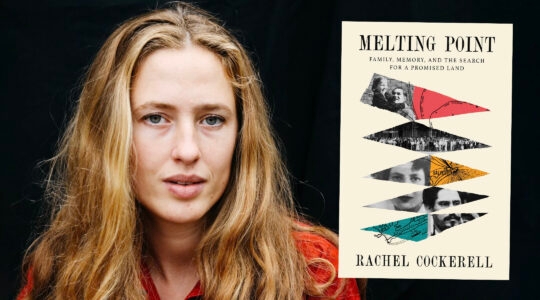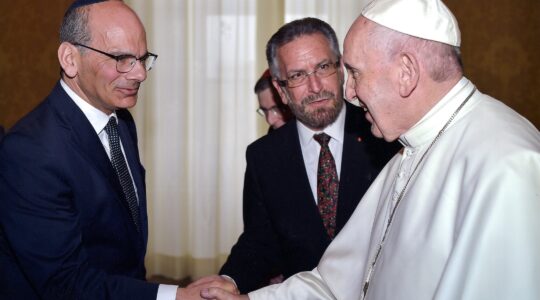It seems that every significant study of the Jewish people is released while we read from the Book of Numbers, the book that derives its English name from the first official census of the Jewish people. It’s as if counting the Jewish people is imbedded in our DNA. That census, conducted 3,000-plus years ago, however, was much more limited in scope: Only men age 20 and older who are able to go to war (Numbers 1:3) were to be counted. From the Torah’s census of 603,550 Israelites of age for war, scholars estimate that the total population was in the 2.5 million range.
More than the number of Israelites, I have always been fascinated by the methodology of the census. The Torah describes the means of counting as S’u et rosh kol adat Yisrael, literally “Lift up the head of all the community of Israel.” (Num. 1:2) It’s a peculiar way to count, leading Ramban (Nahmanides 1194-1270) to propose that the word s’u (to lift up) is only used to indicate greatness; that is to hold one’s head up with pride. More than counting the people, the method suggests that the people had to count themselves in; they had to raise their head to be counted.
As a leader of Conservative Judaism, one might be tempted to lower one’s head in evaluating the results of the recent Jewish Community Study of New York. Years of intermarriage and low birthrates are taking their toll on both Conservative and Reform Judaism. In addition, the rising number of post-denominational and “Just Jewish”-identified Jews is a telling sign that the synagogue as it is currently configured is not meeting the spiritual needs of the next generation. Those of us who believe that a vital religious center is necessary component of a vital modern Judaism need to take note of this reality and own it.
There is an infrastructure crisis in our synagogue communities that is manifest in the manner in which they try to recruit, train and move people up the ladder of leadership. Time is precious, and those who are targeted to become future leaders are often reluctant to commit to this vital resource involved in committee work and inefficient board meetings because of the perception that board dynamics are unproductive. This perception is sadly well founded; synagogue boards are often the places where creativity comes to die. No wonder so many of our young people go elsewhere. That’s the bad news.
In reviewing the study, though, I find lots of good news and even more opportunity. There are, for example, lots of congregants who are part of Conservative communities, and their education and levels of participation in Jewish life, including their generous support of UJA-Federation, is on the rise. They also have higher commitment levels than Reform congregants and those who identify as just culturally Jewish. This can be attributed to our commitment to and the positive influence of our rabbis, cantors, educators and other committed professionals and lay leaders, USY youth movement, Schechter Day Schools, Ramah Camps, Israel travel for both children and adults (approximately 100 congregational trips to Israel each year) and more.
The data also seems to indicate that our stance on intermarriage, reflective of the very real challenges it poses to inclusivity and concern for Jewish continuity, is also correct: to welcome those who have intermarried while advocating for endogamy as the preferred marital choice. The real world is multifaceted. As the epicenter of the Jewish world, Conservative Jews celebrate the nuance of multiple perspectives, especially when they clash social mores.
Nevertheless, the implication of the study, and United Synagogue’s own work while developing our strategic plan — V’asu Li Mikdash, Make for Me (God) a Sanctuary, adopted March 2011 — is that Conservative leaders need to work on the quality of our kehillot, sacred communities, on the commitment level of those who identify with them and on the quality of the learning experiences that they provide for children and their families.
Our first priority, then, is to partner with congregations, kehillot, in their striving for excellence, encouraging them to challenge themselves in a continuous process of self-improvement. The goal of this effort is to build community — to cultivate effective change-oriented leadership, to provide engaging prayer, inspiring learning for children and adults, and spiritual development, as well as meaningful programs.
This is the work of the New United Synagogue and its focus on four core functions: strengthening and transforming kehillot; creating an integrated and collaborative learning paradigm; reaching out to young adults; and nurturing new and emerging communities. The growing Russian community and non-denominational or “Just Jewish” populations, for example, are opportunities for engagement, not cause for concern.
That this study validates our own research and strategic planning is another reason for Conservative Jews to raise their heads with pride. We will continue to meet the challenges of living a meaningful modern Jewish life. We are committed to a dynamic Judaism that is learned and passionate, authentic and pluralistic, joyful and accessible, egalitarian or traditional. Our kehillot create the conditions for a powerful and vibrant Jewish life, empowering Jews in North America to seek the presence of God, to seek meaning and purpose in Torah, to fully engage with Israel, and to be inspired by Judaism to improve the world and the Jewish people. And they are just getting better. We are confident that the next study will demonstrate the fruit of our labor.
Rabbi Steven Wernick is CEO of United Synagogue of Conservative Judaism.
The New York Jewish Week brings you the stories behind the headlines, keeping you connected to Jewish life in New York. Help sustain the reporting you trust by donating today.




